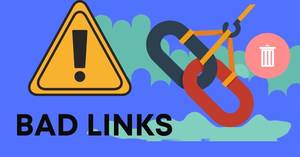Creating and being transparent with your SEO action plan shows the value of your work and expertise. Below are various documents and actions which should produce for your client.
Share Google Docs of SEO Action Plan
Shared access to Google docs shows your project plans, milestones and achievements. Meeting recaps and actions will ensure clients expectations are being met with regards to deliverables.
All your activities should be transparent as clients appreciate this and can give feedback.
Monthly Ranking Reports
After defining your hero terms and desired KPI’s, produce a monthly ranking report. It’s important to be open to building a good relationship. If your rankings fell – explain why this may have occurred.
Possible reasons for Rankings Fell in SEO Action Plan
- Changes to search engine algorithms
- Seasonality
- More comprehensive economic reasons – i.e. possible reduction in transactional queries
- Competitor optimization
- Change in trends
- Loss of backlinks
- URL migration
- Competitors building good authoritative backlinks
- They especially active in social media
- Competitors implementing “black hat” techniques
The numbers show the tangible results of your SEO efforts. The higher your rank, the more clicks you will receive; however, it may not translate into conversions or engagement.
Monthly Backlink Reports for Action Plan
Should have three sections:
- Current backlink performance (use Yahoo! Site Explorer or Google Webmaster Tools) – Show the number of links from your link scouting efforts and the number of links from sites naturally linking. Different color codes connect internal links, affiliate links, partner links, authorities, blogs, etc. Also use v-lookups to discover which links have been lost and gained.
- Link scouting summary, keep a tab to show the sites you have contacted this month and their responses – these can be fed back to the client.
- Next month’s plan, formulate your strategy for the next month, i.e. the sites you plan on contacting and time frames.
Analytics reports for SEO Action Plan
Dig into the analytics and produce a report showing the following key metrics –
- Visits: It is the total no. of visits for particular month. This will give you an idea of an increase or decrease the no. of visitors from all the sources.
- New Visits: The no. of new visitors visit your site. A new visit means the visitor who is visiting your site for the first time. Here is an exception and an approximation in this metric as the GA uses a javascript to track the visitor behaviour and uses cookies for that, a visitor who may have visited your site earlier but deleted the cookies and the same visitor visits again, it is considered as a new visit. So, this data has to be taken as an approximation keeping this in mind.
- Visits From Search Engines: This gives you the data of how many visitor visited the site from differant search engines. This can be filtered more the no of visits from each search engine.
- Visits From Google: After you filter the data from the ( total visits) to (visits from search engines) to (visits from Google), you can track and measure the increase or decrease from this source and can measure the success of the SEO campaign on Google.
- Bounce Rate: This again is an important factor that may not confirmly give you an idea about the improvement of SEO on the site. But it will exactly give you an idea about how many people are finding the landing page interesting enough to visit other pages of the website to collect information about your company. The Bounce Rate shows you the no. of visitors who leave from the landing page itself and did not view any other page. This data is in percentage form.
- Top Landing Pages: Which landing pages have received the most amount traffic this month? Have we been particularly active in SEO for these pages, and are these the main pages of our site?
- Keywords: Look at the top referring keywords for the month. Are any of our hero terms present? The split between brand and generics – gives you an indication of the brand strength the work needed to improve on generics.
- PPC vs SEO: Show how well SEO is doing (hopefully!) against PPC – encourages clients to spend more on SEO and pause PPC campaigns. Look at traffic/ visits/ conversions.
- Top Referrers: Generally, top referrers are social media platforms (social media sites usually no follow anyway). Good to see the disparity between different profiles and creates actions to increase engagements. It also lets you analyze your most productive partnering sites and potential linking sites.
- Conversions: More relevant to e-commerce sites, but can also be used for any site that has a key action they want to track, can help show value with your SEO. Again, if you have done any design-related changes to the site, it will be important to see how it keep impacts your conversion rate. Conversion rates also connected to your keyword research and if you are driving the right type of traffic to the website.
If you get hold of sales/ revenue figures, this can show how your SEO efforts have driven revenue.
Internal Linking Review: It’s a Part of SEO Action Plan
Audit your site’s internal linking structure. Can you reach each page from at least one other page? Is your anchor text descriptive and keyword-rich? Is the hierarchy correct?
Internal linking is one method used to distribute good relevant Pagerank to each web page related to each other’s content.
Interlinking your web pages inside your website helps people find relevant content in the webpage. It also helps search engine spiders have an easier time crawling your website and seeing the relevance with each page,
i.e. it see’s ‘big picture of what your website is all about and how it is structured and related with each other.
Also, Inbound links are a great way to rank better, and you have complete control of your anchor text and anchor title.
These will help the search engines better know what a particular webpage you have is all about.
Having the best anchor text and title assigned to a link is very valuable – although the link comes from another webpage within the website.
Additional Engagement Report
If part of your SEO strategy imply developing the usability and site structure of the website, it will be essential to pay observation to site engagement goals.
Pulling data life time on site, bounce rates, and conversion rates per page will help to understand if your design changes have been successful.
Using a testing and optimization tool like Google Optimize will also help show positive/negative results for your a/b or multivariate tests.
Social Media Monitoring
If you gain more visibility in the search engines, your brand is being revailed to a larger audience.
In turn, your brand will likely be discussed or mentioned more often because of your SEO efforts.
Decide whether it would be best to report on a daily, weekly or monthly basis, and there are a couple of free tools which can help:
Export.ly
http://export.ly/export/facebook
Allows you to export and analyze Facebook fan pages in Excel.
What we get:
- Which people engage with the site the most
- Which topics were the most popular
- How timing of posts affect engagement
- Compare the popularity of our profile against key competitors
http://export.ly/export/twitter
Allows you to export Twitter friends and followers to Excel.
What we get:
- Analysis of lost followers (using V-Lookups)
- Compare engagement against competitors
- Analyze the number of followers we gain/lose throughout the campaign
- Analyze the most popular locations of our followers
Topsy
http://analytics.topsy.com/
With Topsy Social Analytics, you can analyze domains, Twitter usernames, or keywords and compare them over four timeframes: one day, a week, two weeks or a month.
Keyword Research: It’s Needed for SEO Action Plan
It’s important to analyze the search volume of our current hero terms and look to discover trending search terms.
Perhaps we may want to focus away from search terms that are not being highly searched for or go more long-tailed on specific keywords. Use v-lookups to analyze the difference and decide on the strategy.
The Google Keyword Tool and Google Insights for Search are great tools to use. Also, as your authority grows, you may now be in a viable position to rank
for keywords that were unrealistic before or perhaps you have built out content that can target these keywords.
Also use your own analytics data to see where you’re already getting traffic and how your hero terms are performing.
Discovering the split between brand and generics gives you actions such as:
- Which terms to target in external and internal anchor text
- Whether to place brand or generic at the beginning of title tags
Actions
SEO never stops, so continuously define actions and creative additions to maintain/boost your rankings.
Examples include –
- URLs to be reviewed for SEO
- Sites to target for links
- Creation of link bait – widgets/ infographics etc.
- Article/PR distribution
- Social media changes
- Fix problems – canonical/ 404’s / 302’s/ Robots/ JavaScript and Flash/ broken links/ missing meta
- Content creation – new pages/ new blog posts etc
Now, I would like to here from you. Which SEO action plan that you think more effective? Are you ready to implement it? You may read our other articles for more info. We always keep updated our content for consistency and freshness. Thank you. 🙏


